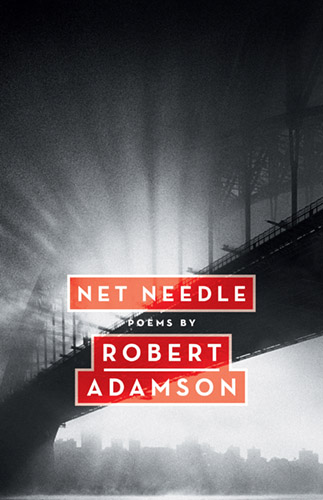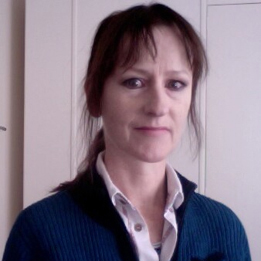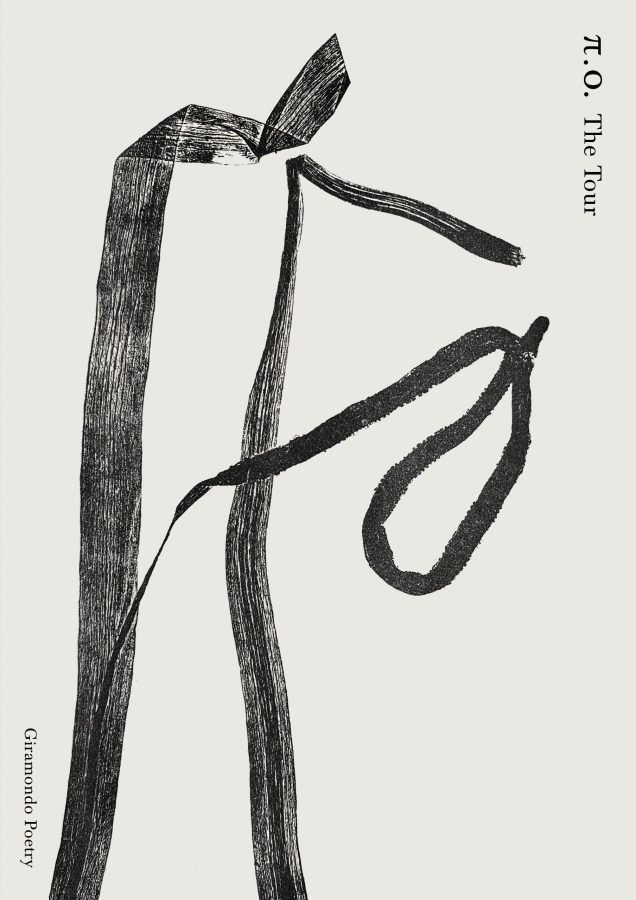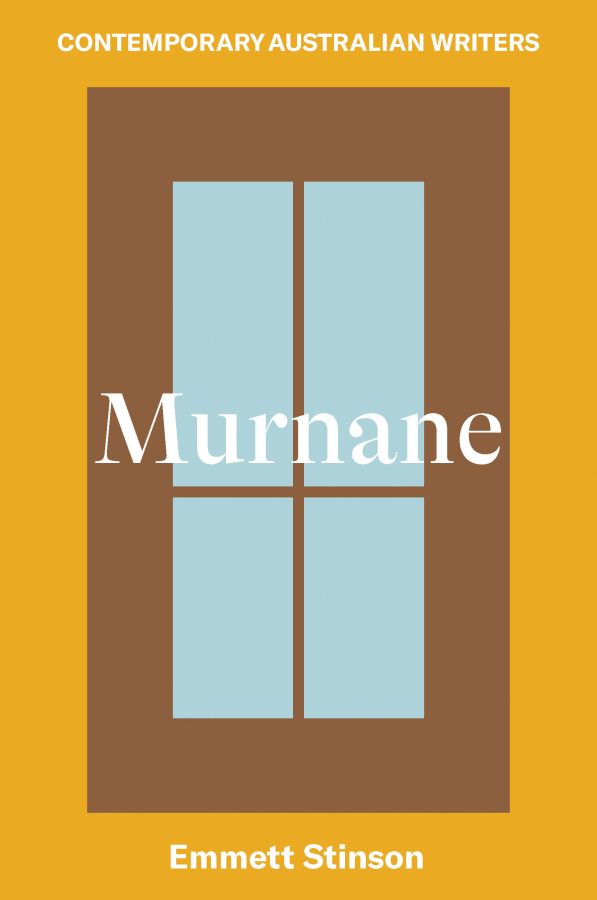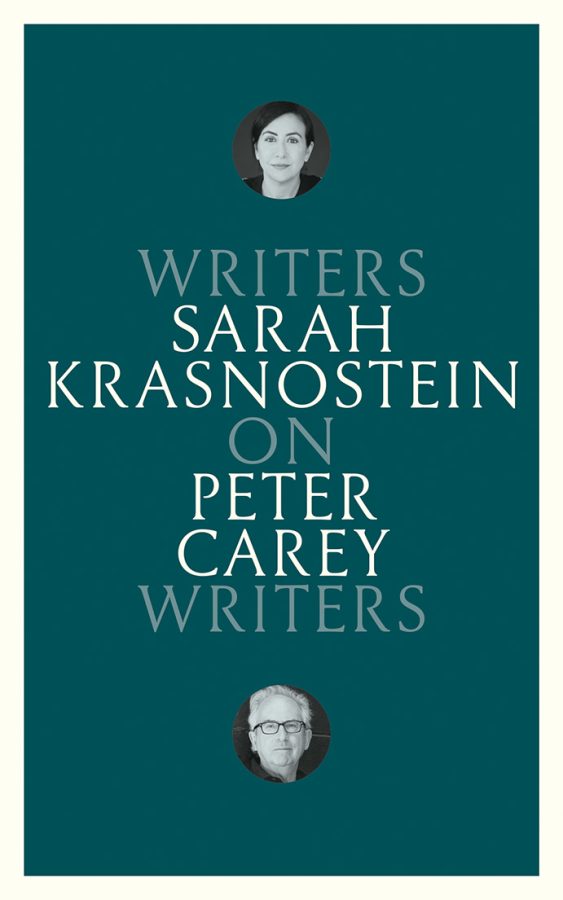Robert Adamson’s many books since 1970 display a restless poet revivified by each permutation. His first books Canticles on the Skin (1970) and The Rumour (1971) were dramatically exploratory, the latter with two questing nervy sequences, ‘Seven Odes To Themselves’, and the ardent ars poetica title poem ‘The Rumour’ that converses with American poets Robert Duncan, Jack Spicer, Louis Zukofsky and others, undercut by vigorous humour – ‘words flood / my experimental period’. Poets mingle through his work, as much as the river, fish, and birds that later almost dominate. In Adamson influence is both process and challenge, ‘Only derivation / brings to bear // the new mode’ (‘The Rumour’). He infiltrates so as to grasp and contend with precursors and colleagues, a similar intent to his contemporary John Tranter’s embrace, or exorcism, of Rimbaud, Ern Malley, and later Ashbery. Swamp Riddles (1974) with its ‘Sonnets to be written from prison’ wittily acknowledges the mine of an autobiography that includes a stay in Long Bay jail in the 1960s:
Surely there must be some way out of poetry other than
Mallarmé’s: still-life with bars and shitcan.
Cross the Border (1977) signalled another direction after these explosive beginnings, towards a somewhat gaseous romanticism in the imaginary Grail poems, while continuing the alternately self-mocking and precipitous confessions of previous books – ‘I’m only aware of what comes before / as I plunge through the life I burn’ (‘Lovesong from across the border’) – but here also are poems in snipped staccato lines, influenced by Zukofsky’s A and its collages of speech, memory and media. Adamson locks in to nature, as the observed permeates the observer, ‘Where does the parrot end and the poem / start?’ (‘Parrot Poem’). Where I Come From (1979) marks another sharp departure, into utterly plain bleak language, with autobiographical portraits clarified by a peeled-back restraint ‘I feel she is washing / and ironing the clothes of death’ (‘My house’). Yet even in such evidently unadorned poems his alliance to metaphor and symbolism continues. Adamson states that this book was inspired by Robert Creeley’s injunction to write in his own speaking voice. Creeley visited Sydney in 1976, and some Black Mountain theories resounded with many Australian poets: ‘form is never more than an expression of content’, wrote Charles Olson, introducing ‘open field’ improvised poetic forms, to which Creeley added ‘and content never more than an expression of form’. Some of these precepts, such as Olson’s ‘following the breath’ have now lost sheen, but Adamson’s work is most often fired by the friction of collision with another’s: ‘I can’t imagine anything if I’m not up against a law’ (‘Sonnets to be written from prison’).
Waving to Hart Crane (1994) includes two rare concrete poems, ‘Lozenge for Brennan’ and ‘Lozenge for Mondrian’, as well as further transportations into myth, that presage the Eurydice sequence in The Goldfinches of Baghdad (2006).
The river seeps through the window…
The extinct fins move
the fingers of my grandfather, mending nets,the dead friends sing from invisible books
(‘Creon’s dream’)
Adamson, then, has been unpredictable, trialling and refining new territories through each book, yet always drilling into his life-long themes of love, nature, myth, autobiography, the circling deities of other artists, from varying angles. But he has moved more towards descriptive poems of private symbolism, inherently linked to the environments of Sydney Harbour and the Hawkesbury River that are plaited through his entire oeuvre, more like Les Murray’s Bunyah than Olson’s Gloucester in his monumental The Maximus Poems (1983, complete; first section, 1953), or Laurie Duggan’s Gippsland of The Ash Range (1987). Adamson’s environment is rarely that of recent ecopoetics concerned with environmental destruction and regeneration. Instead his focus is on the naturally savage and violent world of animal life – the hooked fish (‘all with their eyes eaten out’, ‘Growing up alone’, Where I Come From) , the preying cat, the steely birds – while he also seeks affinity with it: ‘I am writing this inside the head / of a bush stone curlew’ (‘The Stone Curlew’, Black Water: Approaching Zukofsky, 1999), ‘In the park / I flew with lorikeets’ (‘Drum of Fire’, Black Water: Approaching Zukofsky). It is then natural grace and cunning, but also predatoriness, that serve as equivalent to art.
*
Net Needle, Adamson’s fourteenth book, sustains such interactions and again draws on, and drafts, a poetic history, invoking ghostly forbears Charles Buckmaster, Randolph Stow, Francis Webb, and others. Adamson doesn’t seek abnegation of self in nature, but synthesis – much as he does through his homages. The omnipresent river and the bird are also metaphor or allegory, particularly in the earlier Mulberry Leaves (2001) where each bird represents a human character. Later, in The Goldfinches of Baghdad, the title poem and ‘The Flag-tailed Bird of Paradise’ are shrewd fables on the Iraq war, where protest is less pronounced, more supple, than ‘Canticle for the bicentennial dead’ (The Clean Dark, 1989) on Aboriginal dispossession.
Net Needle indicates in its title the poem as net, an often-recurring, even talismanic word (as noun or verb) throughout his collections: ‘my hands net for the moth’s / faint dancing shadow’ (‘The Shining Incidents’, Swamp Riddles). The net is both catcher and sifter, with the needle able to repair and renew. Net Needle then is also the constantly revitalised net accentuating the craft of making – ‘They stitched their lives into my days’ (‘Net Makers’) – and achieves a precarious equilibrium through its scrutiny of life’s twists and reinventions, in which previous masks are abandoned or coalesce, and the bitter irreconcilability of life and art depicted in ‘The house, the spare room’ (The Law at Heart’s Desire, 1982), and the caustic ‘Percy Grainger’s waltz’ (‘Look at this bleak / riff-raff calling / themselves the poetry / of bliss: you’ll / hear a nasty melody… / looking into her / eyes I saw blue and / empty canyons’, Waving to Hart Crane) have over the past 25 years been replaced by redemptive love poems, ‘This day has taken our lives to arrive’ (‘Garden Poem’). The koel birds’s ‘two infamous notes’ also reinstate this attainment by almost bracketing the collection (‘Listening to Cuckoos’, ‘Carnaby’s Cockatoo’). Adamson’s purifying Jacob-like wrestlings with the angels of dead poets also here resemble love poems rather than combat.
The first two sections of Net Needle intermittently record scenes from childhood and rebellious youth. Autobiographical tales have also been vividly realised in the fictionalised novella Wards of the State (1992), and the memoir Inside Out (2004) partly follows the generative upheavals of Australian poetry in the 1970s. A few poems rely less on style and too heavily on the uniqueness of an anecdote, and are too intent on transmitting felicitous salutations that might trace the original impetus towards poetry, while others are coolly stark:
I swallow, nothing’s
left of my pride –
the prison doctor stitched
my cut wrists
without anaesthetic,
his idea of punishment…here in my black slot,
an imaginary whiff
of opium mingles with
the bitter aftertaste of iodine.
(‘The Coriander Fields of Long Bay Penitentiary’)
Parallel to recognition of violence, suddenly art makes real, yet transforms the real, intensifying the thing it evokes – a pop star’s tears as he sings, his father’s sudden glee at spotting a print of the Phantom among his son’s unknowable books and paintings, Judy Garland quoted on the edge of the stage, drinking, ‘Well, this is what you’ve all come to see, isn’t it’ (‘The Sydney Stadium’). Interestingly the following poem ‘The Shark-Net Seahorses of Balmoral’ describes seahorses teasing a groper fish, their ‘hungry, blue-eyed predator’, as if the artist’s audience from ‘The Sydney Stadium’ might also be predatory. Here the net becomes an implement to alter perceptions, both protector, ‘an underwater fence’, and provocation, revealing a divided sifted world, ‘The shark net was a hanging garden under the tide, / beaded seaweed, marine fern, black periwinkles’. Themes of predatoriness seam through his work (‘Her fingers snap against my heart, / her shallow eyes // search my art: her trap’, ‘Demimondane’, Canticles on the Skin), from ‘Sonnets to be written from prison’ where the poet imagines playing to gullible readers, to the poet of the spare room who retires, ‘I turn into the spare room / and begin to write a poem of infinite // tenderness’, having fed on, and caused, life’s traumas. Some images strain awkwardly for definition – ‘affection, received by your skin’s / soft parachute’ (‘Ballad of the word Trauma’), but most engaging are lyrical or zoomorphic detail, ‘the star-flecked dark’ (‘Dorothy Wordsworth’), ‘a Malvern Star, its front wheel / an echidna of broken spokes’ (‘The Midnight Zoo’). One of the best, and headiest, poems, ‘Poem Beginning with a line from William Blake’ records in each stanza an act of violence or violation, with nine tercets akin to the circles of Hell.
The fifth floor was a place for grinding down bones
for bone-black ink, pulverised from
the carbonized skulls of hummingbirds.
The third section communes with the dead, honouring those who have influenced the poet, perhaps another form of predatoriness, but also of love.
a typewriter of bones tapping Morse on the spine’s
fretwork the philosopher a machine ticking out daysskidding down aisles in the supermalls I stand here
in a column of breath mixed with fine dust from red dirtpolishing fingernails hair combed dressed to
cast the same net over leagues of broken weather(‘Internal Weather, for Randolph Stow’)
The last section of Net Needle begins with prose poems that heighten the focus on mortality with the deaths of creatures now viewed as compassionately as those of colleagues. Francis Webb and Michael Dransfield are stamped with place, analogous to his own Hawkesbury, and Pierre Reverdy and Shelley awaken in translation or revision:
Before this angel could spin his cryptic lie
a thrilling sound of dark wings taking flight
was heard in heaven – then the lights went out.(‘After Shelley’s Satan Broken Loose’)
That is, the process of writing is itself a form of reincarnation, with Buckmaster ‘writing back the great auks, speaking of branches / to sing from’ (‘The Great Auk’). Some poems then reprise his familial address that exercises or occasionally repudiates others’ poetics, as in earlier intense jousting tributes to Duncan, Creeley, Vicki Viidikas, Bob Dylan, Brett Whiteley, Michael Palmer and others. As he has said – Cross the Border’s ‘grand fictions’ were written partly under the influence of Mallarmé, and later books Waving to Hart Crane and Black Water: Approaching Zukofsky, and the chapbook Theatre, responses to Bonnefoy (1974), supply homage with their titles. Each stage transmutes its influences, not only commemorating but serving as links in the chain of an eternally-present poetry, or grand collage, as Duncan envisioned. In his first books, the poet ecstatically juggles styles of poetry, and borrows these masks as ballast, ‘thus they rise again / Metaphors as genial facades / Rise’ (‘The Rumour’). Yet paradoxically through all dilutions and disguises, the poet remains immediately recognisable, on the tolling climb up an ideal Parnassus, propelled by his staked poetic history. These correspondences through time reveal a similar permeability to that in his poems of birds, that is, the poet can never be a stable unity, but must always be flickering back and forth between past and present, between involvement and introversion, between learning and creation. Many poems begin or finish with an observation of nature, often of a bird, implying as Auden’s frozen brooks or Shelley’s skylark do that an entire world remains, and remains again to be written, aslant if not extrinsic to human labour, as an unreachable sublime.
A charcoal sketch of this scene unfurls before me
on a sheet of mist, I push aside tough vines of
morning glory, and then walk on, into the drawing…Now I rise from the sketch,
my face smeared with ink from years of sinning –back on the river, my boat plows through fog.
I’m looking hard. What form, shape or songmight represent a soul? What words, paint, or mud
resemble such an intangible glow?A stain of mist hangs above a blackbutt,
brushed by the wings of a grey-headed flying fox.
(‘Via Negativa, The Divine Dark’)
References:
John Kinsella, interview with Robert Adamson (1998)
John Tranter, interview with Robert Adamson (1978)
